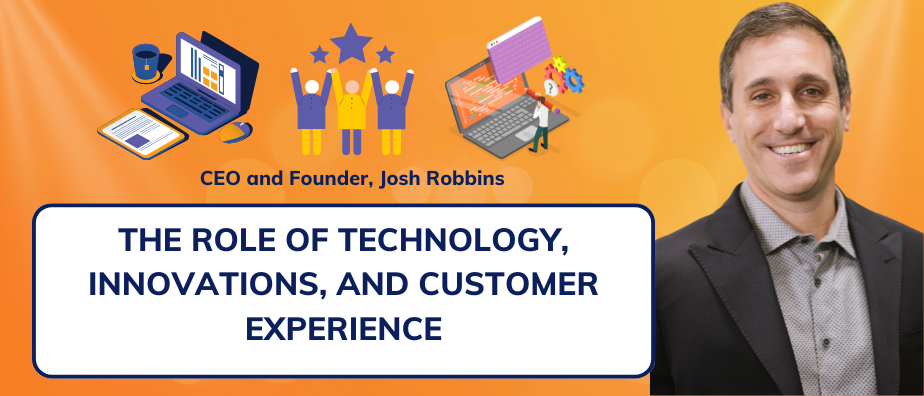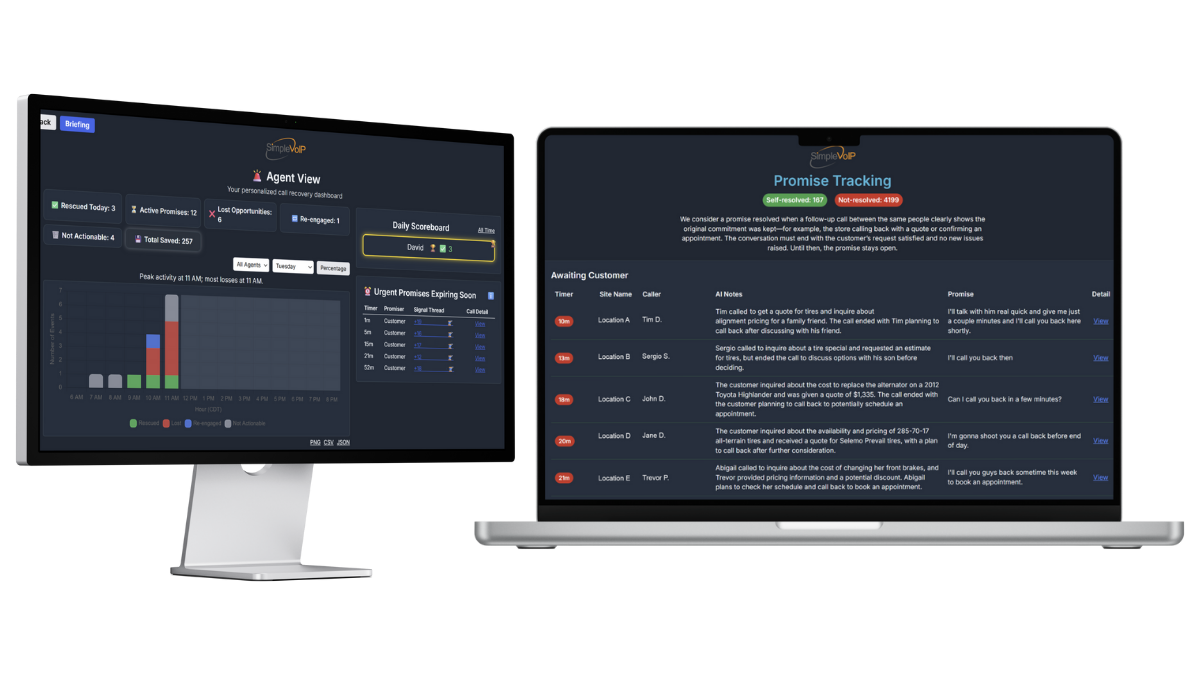Business communication is going through a major shift, and it’s not just about moving away from desk phones. It’s about making every interaction more meaningful, more responsive, and easier to manage. At SimpleVoIP, this shift is happening through purpose-built tools like SimplyAI and Caller Insight. These features aren’t about flash or complexity. They’re designed to solve real problems and help businesses deliver better experiences with less effort.
We recently spoke with Josh Robbins, founder and CEO of SimpleVoIP, about how these new tools came to life, why they matter now, and how they’re shaping the future of customer interactions for companies across all industries.
Saying Goodbye to the Desk Phone
For years, the desk phone was the anchor of business communication. But times have changed. With remote work and flexible job locations becoming the norm, the idea of being tied to a single phone in a single location doesn’t make much sense anymore.
According to Josh, even his own office no longer has a desk phone. Like many professionals, he’s now using platforms like Microsoft Teams and mobile apps to communicate. This shift isn’t just about convenience. It’s about meeting people where they already are and giving them tools that work whether they’re at home, on the road, or traveling between sites.
SimpleVoIP has built its platform around that flexibility. Whether a call happens through a mobile device, a softphone, or an integrated collaboration tool, the company makes sure voice is available without adding friction.
SimplyAI: Turning Conversations into Clarity
One of SimpleVoIP’s newest features, SimplyAI, is designed to give businesses a clearer picture of their customer interactions. After each call, the platform captures the audio, processes it, and delivers a summary of what was discussed. It also notes the tone of the conversation, highlights key topics, and even outlines potential next steps.
This is especially useful for companies that handle high call volumes or have multiple departments involved in customer communication. Instead of relying on manual notes or memory, teams can refer back to a structured call summary that gives them what they need to follow up effectively.
But the vision for SimplyAI doesn’t stop at single calls. Josh shared that larger customers are already asking for ways to analyze trends across thousands of interactions. They want to know how often competitors are mentioned, where negative sentiment is showing up, and which regions or stores may need extra support. These requests are shaping the next phase of development, where SimplyAI will provide a broader look at customer communication patterns and help identify opportunities to improve.
Caller Insight: Giving Staff a Head Start
Another tool in beta, Caller Insight, takes a familiar concept—caller ID—and turns it into something far more useful. Instead of just showing a name and number, Caller Insight pulls additional information about the person calling, so staff can personalize the experience from the moment they answer.
For restaurants using platforms like OpenTable or Toast, this means seeing reservation details, loyalty tags, average spend, and preferences right as the call is coming in. A host can greet the caller by name, confirm their upcoming reservation, or offer tailored help without asking them to repeat the basics.
This helps reduce the time spent searching for guest records and improves the quality of the interaction. It also frees up staff to focus on the customers in front of them, instead of getting bogged down in slow lookup processes.
The broader goal behind Caller Insight is to make customer service feel more personal without making it more complicated. In industries like hospitality, those little touches can turn a routine call into a lasting impression.
Putting Customer Experience First
Throughout the interview, Josh kept returning to the same theme: the technology only matters if it improves the experience for the customer. That belief has shaped the way SimpleVoIP designs and delivers its products.
The platform’s built-in analytics already help users identify missed calls, spot underperforming locations, and fix gaps in service before they become major issues. These reports and dashboards aren’t just for IT teams. They’re used by managers, marketing departments, and operations leaders to stay on top of performance and take action quickly.
By offering tools that surface the right information at the right time, SimpleVoIP is helping companies avoid the frustrating experiences that drive customers away. Whether it’s a missed call that was never returned or a confusing phone tree that leads nowhere, small moments like these add up. The company is focused on helping businesses reduce friction and respond more intentionally.
Built for the Real World
What sets SimpleVoIP apart from other providers is its strong focus on distributed enterprises. From the beginning, the company has supported businesses that operate across hundreds or even thousands of locations. These customers don’t just need a phone system—they need one that scales, stays consistent, and adapts quickly.
To meet those needs, SimpleVoIP uses a templated approach to provisioning and system changes. This allows the team to roll out updates, deploy new services, and make configuration adjustments at scale without starting from scratch each time. For the IT departments managing these networks, that means less time spent troubleshooting and more time focused on supporting business growth.
That same model is now expanding to support small and midsize businesses too. Even if a company only has a handful of locations, they still benefit from the same reliability and responsiveness that SimpleVoIP is known for.
Looking Ahead
When asked what excites him most about the future of the company, Josh pointed to the continued development of AI tools. Not because AI is a trend, but because of how much potential it has to help businesses work smarter.
There’s a growing interest in connecting communication data to other systems like CRM platforms and sales tools. Imagine being able to see how positive call sentiment aligns with revenue increases, or identifying which types of interactions lead to the best outcomes. While these features are still evolving, the foundation is already in place.
What’s clear is that SimpleVoIP isn’t building these tools just to keep up with the industry. They’re building them because customers are asking for better ways to handle communication—and they’re listening.
Closing Thoughts
SimpleVoIP is making business communication easier, faster, and more useful, without overcomplicating the process. Features like SimplyAI and Caller Insight aren’t gimmicks. They’re practical tools developed in response to real customer feedback, and they’re helping companies provide better service without adding more work.
As voice continues to evolve, SimpleVoIP is staying grounded in what matters most: clear conversations, useful data, and better experiences for the people on both ends of the call.




